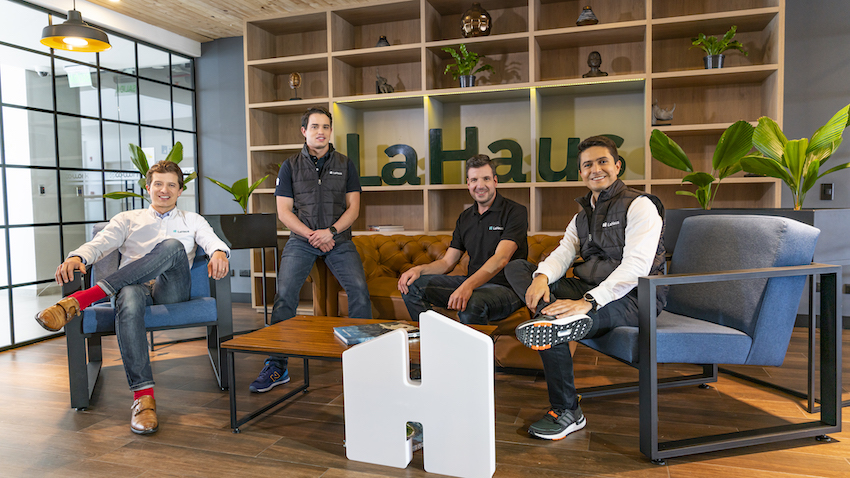A few days ago, Endeavor and PepsiCo presented a report called “The FoodTech Landscape in Latin America“. As the document shows, the non-profit entrepreneurship organization and the multinational food giant identified 323 foodtech companies in five key countries in the region: Argentina, Brazil, Chile, Colombia, and Mexico.
A third of these companies were studied closely. Their entrepreneurs, investors, and other actors involved in their growth were also identified to get a clearer picture of what is happening in this dynamic sector.
Something to highlight is that the foodtech sector does not only include companies that are developing new foods but all of those that are using tech to transform the operation, logistics, and even last-mile delivery of food products.
One of the key findings of the report: over $1.7 billion in 206 investment rounds have flown into foodtech companies in LatAm in the last decade, and 64% of that capital has been invested just in the last two years.
Still, the amount is not enough. It represents less than 10% of what has been invested in venture capital in Latin America in the last ten years. While sectors like fintech and e-commerce usually get most of the capital –47% and 43%, respectively–, foodtech and other related sectors like agrotech could receive more given their huge growth potential.
We talked with Enrico Robles del Río, head of Intelligence at Endeavor Mexico, to know more about such potential.
Contxto (C): How much has the LatAm foodtech ecosystem changed in the last few years?
Enrico Robles (ER): Just consider that there were no foodtech unicorns when we first began this report in late 2020. Now there’s NotCo, Fluvana, Fazenda Futuro, TiendaNube, Jüsto, Nowports, CargoX. There are plenty in the transportation marketplace since there is the need to make transportation more efficient and avoid cost-inefficient practices.
Other companies like Yalo are having a huge impact when it comes to making SMEs concentrate on their product instead of customer service. In general, we are seeing a very fast digitization and transformation process in the entire sector.
C: Do companies in the foodtech sector collaborate amongst themselves?
ER: As it also happens in other sectors, when a foodtech expands into other markets, it’s easier if it buys small, local players that complement their offering. Companies with good financial backing tend to do this, also because is a good entry strategy to a regulated market. There have been several recent acquisitions in this way.
But you also see collaboration between big companies and young startups. They are working together to use existing infrastructure for distribution, making the most out of underutilized assets by using deep learning models that help determine demand… all of this speaks of how technology is making the supply chain more efficient and creating more engagement with consumers in the entire region.
As an ally in this study, PepsiCo validates this collaboration. The company and other huge players in the industry were trying to understand where’s the innovation in the supply chain, where would the next trends come from, which consumer habits are becoming important. In this way, the report has brought important findings for them and the entire sector.
C: How have VC investment dollars flowed towards foodtech startups in LatAm?
ER: About 47% of the VC money invested in Latam has gone to the fintech sector, and 43% to e-commerce. That’s where there’s work to be done: not everything is fintech or e-commerce; rather, there are other sectors with really interesting projects that need financing.
Foodtech is attracting a lot of attention. We found that, in general, the industry’s financing comes from VC firms. However, there’s still the need for larger access to capital because the LatAm food industry has been long ignored.
It is now a multi-industry sector; its predictive models allow for better distribution routes, how to make them better so that food doesn’t spoil, patterns of consumer habits are identified, etcetera.
In terms of countries, Brasil is number one in terms of attracting capital for foodtech. It represents about 60% of the total and has companies with incredible growth, like Fazenda Futuro. Then there’s Mexico.
Chile is an interesting case since it has 31 foodtech companies that were created thinking about global markets. More than half (52%) have expanded to other countries.
Many of them, like Cornershop and NotCo, have grown because Chile allows broader access to financing. More than 71% of early startups in Chile have access to financing, compared to the 49% in Mexico and Colombia. And while these companies keep growing, more capital flows into them.
This might also interest you: Jüsto acquires Freshmart, Peru’s leading online supermarket






